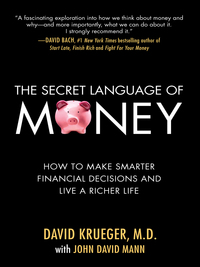Question
Question 1 William is in the business of selling televisions and related appliances from a building he owns in Sydney. Most customers pay at the
Question 1
William is in the business of selling televisions and related appliances from a building he owns in Sydney. Most customers pay at the time of delivery. However, William provides credit to his largest customers. During the year ended 30 June 2019, William received $3,100,000 in cash for sales of televisions and related appliances. Sales that had been made during the year ended 30 June 2018, but which were paid for in the year ended 30 June 2019 were $340,000 and are included in the $3,100,000 above. On 30 June 2019 sales of computers and related software not yet paid for amounted to $430,000. On 12 December 2018, William received $450,000 from a competitor for agreeing not to open a similar business in Melbourne.
During the year ended 30 June 2019 purchases of televisions and related appliances were $1,300,000 and at 30 June 2019 stock on hand was $235,000. William's closing stock for the year ended 30 June 2018 was $430,000. During the year ended 30 June 2018 William gave away 5 televisions to a local charity. The televisions cost him $2,800 each and had a market value of $3,400 each.
On 1 April 2018 William's cash register stopped working. It would have cost $1,500 to have it repaired. Instead, William installed a new cash register costing $2,400 on 1 May 2018.
During the year ended 30 June 2019 William also paid his lawyer $50,000 in legal fees to stop a competitor taking over his business and wages to his employees of $410,000. William's wages of $410,000 included $90,000 paid to his mother-in-law, Jennifer, who worked for 3 days a week in the business. Another employee who also did the same job for 3 days a week was paid $60,000. He is a big fan of American Football and competes occasionally in the local Sydney competition. He won a trophy (valued at $1,200) in the local competition on 1 April 2019. On 1 July 2018 William reimbursed one of his employees the cost of her iPhone 11 which cost $2,000. The employee used the iPhone 11 predominantly for work.
In addition to running his business, he teaches business studies part-time at the local college. He was paid a salary of $30,000 during the year ended 30 June 2019. However, the payroll section of the College discovered an error showing William had been underpaid by $1,000 during the year ended 30 June 2019. The College paid him this amount of back-pay on 1 July 2019. William wishes to minimize his tax deductions. Assume all depreciating assets, if any, have an effective life of 6 years. He does not wish to use the SBE election.
Required:
a) What is William's assessable income for the year ended 30 June 2019?
b) What income tax deductions can William claim for the year ended 30 June 2019?
You must give reasons for your answer. Your discussion must include an analysis of the pertinent sections of the relevant legislation, rulings, and the relevant case law. If relevant, you must show your calculations.
Question 2
William operates his own business selling rare books in Dubbo NSW. He incurred the following expenses during the 2019 tax year.
a. On 1 July 2018 William paid $3,000 for public liability insurance (for one year) in case a client or customer hurts themselves and sues William.
b. Travelling costs of $2,200 paid to a prospective employee to attend an employment interview. The prospective employee flew from Sydney to Dubbo NSW and William reimbursed the
costs of the employee's travel.
Required:
What amounts can William claim as a deduction under the Income Tax Assessment Act 1997 for the year ended 30 June 2019?
You must give reasons for your answer. Your discussion must include an analysis of the pertinent sections of the relevant legislation, rulings and the relevant case law. If relevant, you must show your calculations.
Question 3
Ray and Louie are partners in a business. According to their partnership agreement, they must share profits on a 40% (Ray) / 60% (Louie) basis after partners' salary of $5,000 each and interest on capital account. Ray is entitled to receive interest of $8,000 on his partnership capital account. Losses are also shared on the same basis.
During the 2019 tax year, Ray received wages of $25,000 from his job as a security guard. Louie received $65,000 in unfranked dividend on his Watpac shares.
At the end of the 2019 tax year, their partnership profit and loss show that Ray and Louie have been paid a salary of $5,000 each and Ray had received his $8,000 interest on the capital account. The business made an accounting profit of $5,000 (after paying the above-mentioned salaries and the interest on the capital account).
Required:
Calculate Ray's Taxable Income for the year ended 30 June 2019.
Students must give reasons for their answers. This discussion must include an analysis of the pertinent sections of the relevant legislation, rulings, and the relevant case law. If relevant, students must show calculations.
Question 4
What is the objective of the Dividend Imputation System and how does it achieve this objective?
Step by Step Solution
There are 3 Steps involved in it
Step: 1

Get Instant Access to Expert-Tailored Solutions
See step-by-step solutions with expert insights and AI powered tools for academic success
Step: 2

Step: 3

Ace Your Homework with AI
Get the answers you need in no time with our AI-driven, step-by-step assistance
Get Started


